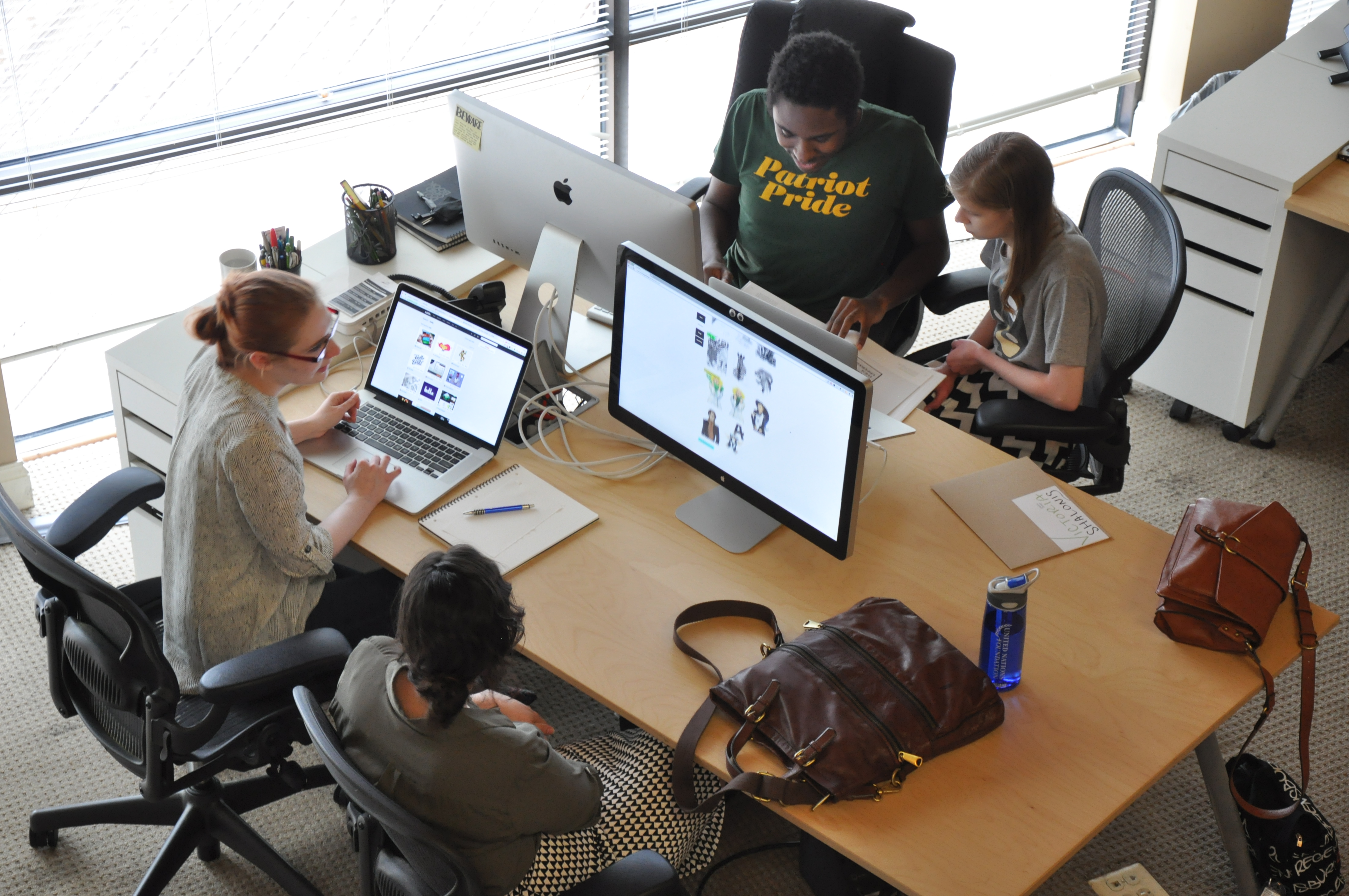4 Things Designers Can Learn From Portfolio Reviews
Last week, WDG hosted its first portfolio review of the year, sponsored by Behance. Portfolio reviews are extremely important tools designers at all stages can use to improve and perfect their skills! Because let’s face it—we all have work to do.
Here are 4 of the biggest takeaways I think every designer could benefit from. Let’s get going!
4 Takeaways from WDG’s Portfolio Review
On Presentation
Because it’s a design portfolio, presentation is key. Your work may be beautiful, but you need to show it off it seamlessly and effectively. This means having a web presence, so you can easily upload work. Having work online is extremely beneficial to interviewers. If you need an in-person meeting just to show your work, people might skip to the next person on the list with items they can preview.
And when uploading work, make sure you do them justice! Expend the effort to customize and contextualize the presentation of a project with great images. If you made a font, don’t just show me the letters. Show it to me in application! If you built a website, show me how it breaks down responsively. Very simple projects are made richer by going out of your way to make it so.
There’s dozens of avenues available for uploading work that we’ve mentioned in the past.
On Resumes
Depending on where you apply, your resume is an interviewer’s first impression of you. Your resume should be highly informative, succinct, and well-formatted. Especially if you’re applying for a design position!
When delving into work experience, tailor it so your positions are relevant to the job at hand. It’s tempting to over-explain. I recommend keeping your descriptions short and focused. A great boon when writing your descriptions—focus on quantifiables. How many projects or clients did you work on at a previous job? How many people engaged with your deliverables? Who are some specific clients?
Your job description will resonate much more with interviewers if they can quickly understand and recall later what made your time spent worth noting.
On Portfolio Content
Your portfolio validates your experience. What you do or do not show, and how you present—it dictates whether or not you’re invited to interview.
I’ve noticed students tend to panic about how many items to show, and often add way too many small pieces instead of filtering their work to their greatest hits. A simple rule to follow when choosing: if this is the only piece someone clicks, will they hire me? If someone opens your site, you should not be silently hoping they won’t click any of the options you’ve presented.
More important, how you explain your portfolio is crucial. If you have work on your website, make an effort to explain the project with an appropriate amount of detail. What did you do? Why did you do it? Explain your decisions and why you believe them to be effective. You should minimize opportunities for anyone viewing your work to have to guess your contributions.
Post-Review Advice
All the students we reviewed had different elements to improve their portfolios and presentations. But there’s still general advice that applies to everyone who visits portfolio reviews!
- Always take notes when at portfolio reviews. Portfolio reviews are all about the quality feedback you get. If you don’t tale notes, you’ll have both wasted your time and possibly set yourself up for future failure.
- Tackle your edits and improvements as quickly as possible, especially if your ability to apply for internships or jobs relies on these improvements. It’s something you have to do eventually. Do it with eagerness and efficiency!
- Follow up with your reviewer. Your reviewer wants you to be successful, and would love to know that you’ve taken their advice to heart to better yourself. Keep in touch—you never know who they know or who they’ll be able to connect you with when the time is right.
Get out there and good luck!
